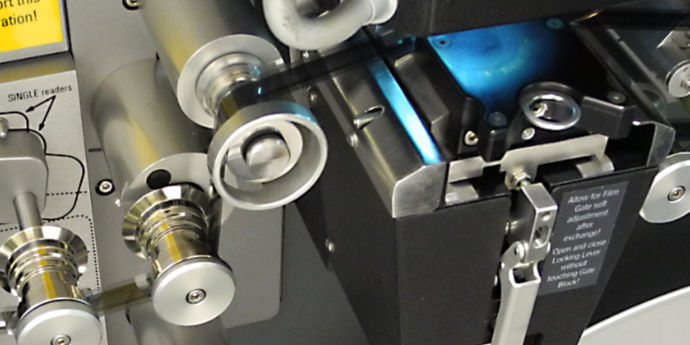The black and white television equipment installed at GTV9 in the late 1950s delivered remarkably good picture quality. This was especially so within the studio complex itself where the engineers maintained the equipment to a high standard and sought the best possible picture quality.
Before the arrival of videotape in 1959, making “kines” to 16mm film was the only way of preserving a broadcast. The use of film as an archival and/or distribution medium continued well into the 1960s.
Unfortunately film recordings introduced many artefacts and compromises to the picture quality. These included: film grain, dust marks, scratches, jitter and poor tonal rendering — artefacts that were not present in the pristine video images.
The film recordings of the Tarax Show pantomimes exhibit these typical film artefacts.
By the time this material came my way in 2006, I was already aware of the possibilities of digital restoration of film — having marvelled at the the “before and after” comparisons of the restored version of 1950s Hollywood classic “Roman Holiday”. Clearly, digital restoration could work wonders with old material.
I was curious whether digital restoration could be applied to the Tarax Show material to bring the image quality closer to the original video?
A Digital Restoration Test via Lowry Digital Imaging in Hollywood
“Roman Holiday” had been restored by Lowry Digital Imaging in Burbank, California, so that seemed a good starting point. I contacted them via email. Steve Alvanos from Lowry generously offered to process a short segment at no charge to demonstrate the capabilities of their digital restoration technology.
The test was arranged. A before and after comparison of a ten second piece from “The Magic Mirror” is shown below.
The clarity of YouTube video may not be adequate to capture the differences, but there is a very noticeable improvement in image quality in the processed footage.
The Lowry result convinced me that digital restoration was worth pursuing, if it could be afforded. Affordability was the big question.
But in the mean time there were problems looming on the horizon with telecine. More about that in the next post.
Footnote: In 2012 I contacted Lowry again, to find out whether their technology had improved or whether their prices had reduced! By this time the company had been purchased by Reliance MediaWorks. They offered to do another test, which in due course we arranged. The results with their newer software were different but just as impressive.
